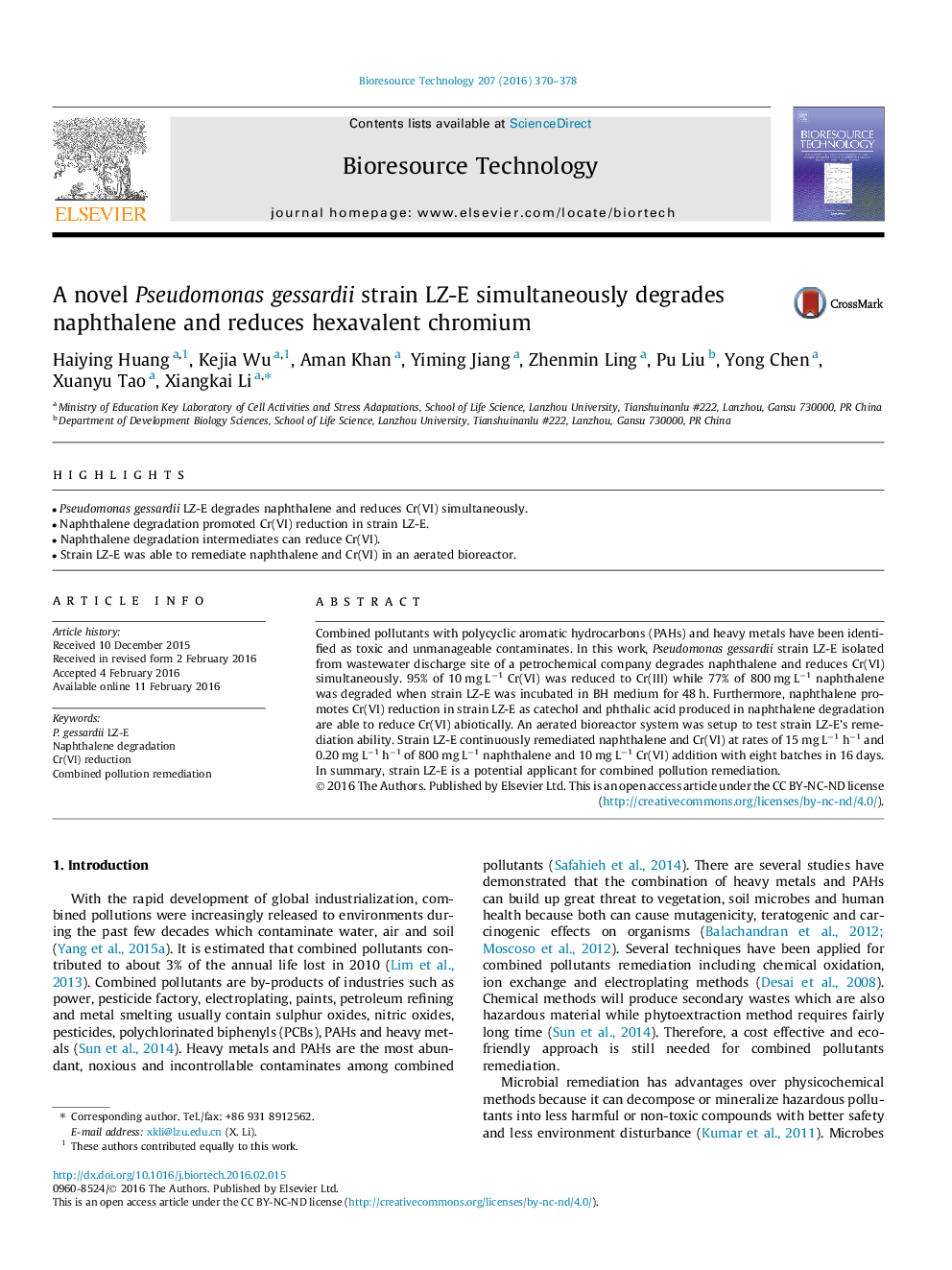| Article ID | Journal | Published Year | Pages | File Type |
|---|---|---|---|---|
| 7072197 | Bioresource Technology | 2016 | 9 Pages |
Abstract
Combined pollutants with polycyclic aromatic hydrocarbons (PAHs) and heavy metals have been identified as toxic and unmanageable contaminates. In this work, Pseudomonas gessardii strain LZ-E isolated from wastewater discharge site of a petrochemical company degrades naphthalene and reduces Cr(VI) simultaneously. 95% of 10 mg Lâ1 Cr(VI) was reduced to Cr(III) while 77% of 800 mg Lâ1 naphthalene was degraded when strain LZ-E was incubated in BH medium for 48 h. Furthermore, naphthalene promotes Cr(VI) reduction in strain LZ-E as catechol and phthalic acid produced in naphthalene degradation are able to reduce Cr(VI) abiotically. An aerated bioreactor system was setup to test strain LZ-E's remediation ability. Strain LZ-E continuously remediated naphthalene and Cr(VI) at rates of 15 mg Lâ1 hâ1 and 0.20 mg Lâ1 hâ1 of 800 mg Lâ1 naphthalene and 10 mg Lâ1 Cr(VI) addition with eight batches in 16 days. In summary, strain LZ-E is a potential applicant for combined pollution remediation.
Related Topics
Physical Sciences and Engineering
Chemical Engineering
Process Chemistry and Technology
Authors
Haiying Huang, Kejia Wu, Aman Khan, Yiming Jiang, Zhenmin Ling, Pu Liu, Yong Chen, Xuanyu Tao, Xiangkai Li,
